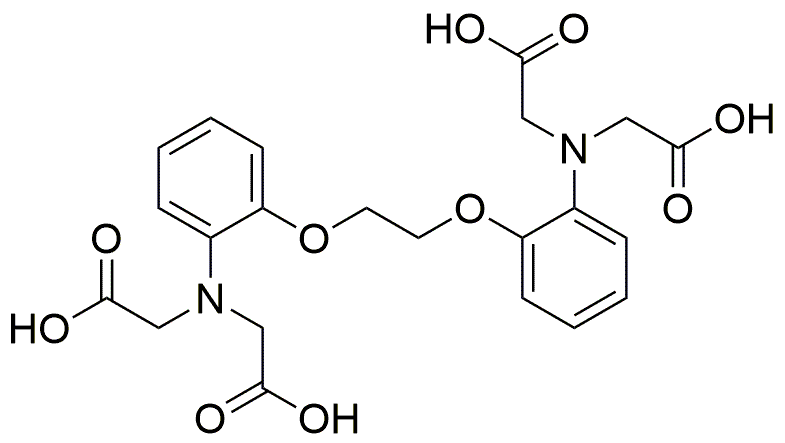1,2-Bis(2-Aminophenoxy)ethane-N,N,N',N'-tetraacetic acid is widely utilized in research focused on:
- Metal Ion Chelation: This compound effectively binds to metal ions, making it valuable in applications such as removing heavy metals from wastewater in environmental engineering.
- Biomedical Research: Its chelating properties are leveraged in drug formulation and delivery systems, particularly for targeting metal-dependent enzymes in cancer therapy.
- Analytical Chemistry: Used as a reagent in various analytical techniques, it helps in the detection and quantification of metal ions in biological samples, enhancing the accuracy of results.
- Diagnostic Imaging: The compound's ability to chelate metals is applied in the development of contrast agents for MRI scans, improving imaging quality and patient outcomes.
- Pharmaceutical Development: It serves as a stabilizing agent in the formulation of pharmaceuticals, ensuring the efficacy and safety of drug products by preventing metal-induced degradation.
General Information
Properties
Safety and Regulations
Applications
1,2-Bis(2-Aminophenoxy)ethane-N,N,N',N'-tetraacetic acid is widely utilized in research focused on:
- Metal Ion Chelation: This compound effectively binds to metal ions, making it valuable in applications such as removing heavy metals from wastewater in environmental engineering.
- Biomedical Research: Its chelating properties are leveraged in drug formulation and delivery systems, particularly for targeting metal-dependent enzymes in cancer therapy.
- Analytical Chemistry: Used as a reagent in various analytical techniques, it helps in the detection and quantification of metal ions in biological samples, enhancing the accuracy of results.
- Diagnostic Imaging: The compound's ability to chelate metals is applied in the development of contrast agents for MRI scans, improving imaging quality and patient outcomes.
- Pharmaceutical Development: It serves as a stabilizing agent in the formulation of pharmaceuticals, ensuring the efficacy and safety of drug products by preventing metal-induced degradation.
Documents
Safety Data Sheets (SDS)
The SDS provides comprehensive safety information on handling, storage, and disposal of the product.
Product Specification (PS)
The PS provides a comprehensive breakdown of the product’s properties, including chemical composition, physical state, purity, and storage requirements. It also details acceptable quality ranges and the product's intended applications.
Certificates of Analysis (COA)
Search for Certificates of Analysis (COA) by entering the products Lot Number. Lot and Batch Numbers can be found on a product’s label following the words ‘Lot’ or ‘Batch’.
*Catalog Number
*Lot Number
Certificates Of Origin (COO)
This COO confirms the country where the product was manufactured, and also details the materials and components used in it and whether it is derived from natural, synthetic, or other specific sources. This certificate may be required for customs, trade, and regulatory compliance.
*Catalog Number
*Lot Number
Safety Data Sheets (SDS)
The SDS provides comprehensive safety information on handling, storage, and disposal of the product.
DownloadProduct Specification (PS)
The PS provides a comprehensive breakdown of the product’s properties, including chemical composition, physical state, purity, and storage requirements. It also details acceptable quality ranges and the product's intended applications.
DownloadCertificates of Analysis (COA)
Search for Certificates of Analysis (COA) by entering the products Lot Number. Lot and Batch Numbers can be found on a product’s label following the words ‘Lot’ or ‘Batch’.
*Catalog Number
*Lot Number
Certificates Of Origin (COO)
This COO confirms the country where the product was manufactured, and also details the materials and components used in it and whether it is derived from natural, synthetic, or other specific sources. This certificate may be required for customs, trade, and regulatory compliance.


